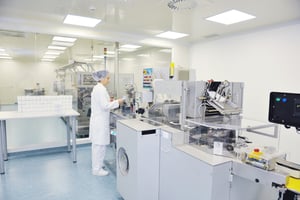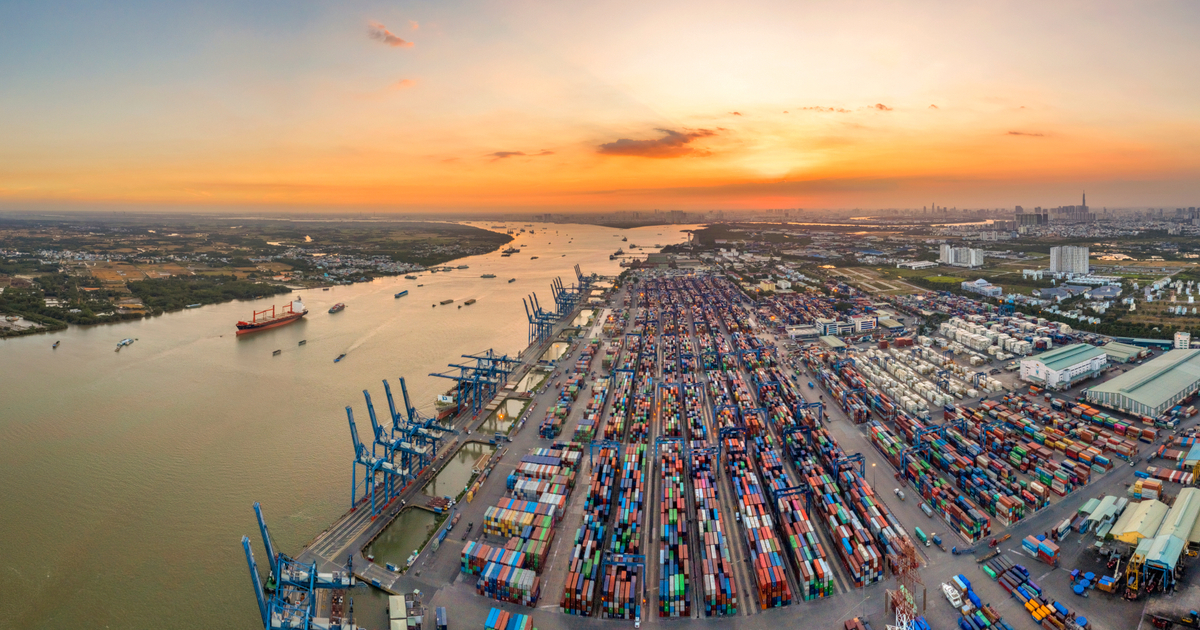Top Trends Impacting the Packaging Machinery Industry
Packaging machinery plays an essential role across a wide variety of industries including food and beverage, personal care, chemicals, electronics, and pharmaceuticals.

In a recent webinar, long-time Global Industry Analyst Gleb Mytko of The Freedonia Group described eight key trends to watch in the global packaging machinery market. Watch a video of the webinar below or read a recap of Mytko’s main points in this blog post to learn more. “The last decade has seen a lot of change in the global packaging machinery industry,” Mytko explained. “One of the main concerns has been about the environmental impact of the machinery and the packaging materials that are being used around the world.” Concerns about climate change and plastic pollution are increasing. The plastic waste issue is particularly important in Asia, where plastic trash from the ocean washes up on beaches in countries like Thailand and Indonesia. These countries have taken drastic action in recent years to address those issues. Demand is growing for green packaging materials that are less polluting and more recyclable. However, switching a packaging configuration or material is a fundamental change that can often require costly new equipment. “It’s a more complicated process than flipping a switch and saying we changed to a new packaging material,” Mytko said. “In general, for most materials when there’s a switchover, it’s going to be fairly comprehensive, and it’s going to involve a complete rethinking of the packaging process, because for the company, it’s really a start-to-finish evaluation of the process and how you can reduce waste, so you’re really looking at all stages of it, as a way of maximizing efficiency. Companies are willing to invest in new machines if that’s what it takes. That tends to be more efficient than adapting older equipment.” The second trend Mytko described was an increased focus on technological innovation for manufacturers of packaging machinery. “This has become a leading competitive factor in a lot of countries and markets, and companies are working to develop the next of generation machines to position themselves for future success,” Mytko stated. Companies are making strategic investments in artificial intelligence, advanced software, and other cutting-edge technologies. “The technological innovation in the global packaging machinery industry will continue to accelerate,” according to Mytko. “The incorporation of advanced technologies, from sensors to software, is going to pick up and become more widely available as the number of companies that offer advanced machinery increases. You’ll also see intensifying competition, which is a major driver of innovation.” Additionally, many companies are moving toward greater customization to produce innovative packaging configurations as a way of attracting customers and differentiating themselves. “The need for greater customization will drive companies to roll out new packaging equipment that’s more capable, more efficient, even safer in some instances, depending on what they are trying to do,” Mytko said. Government regulations also play an important role in the industry. “We’ve had a lot of regulations strengthened around the world during the last decade that have increased the use of packaging materials and the quality of the packaging materials, and that’s driven sales to an extent,” according to Mytko. In many mature markets, regulations are strengthening for food products. In developing countries, there is growing use of packaging materials used for shipping. The COVID-19 pandemic is another major factor that has impacted the packaging machinery industry. COVID-19 revealed the vulnerability of global supply chains and the growing importance of workforce issues. It also stressed the financial resources of companies, which changed how they thought about packaging equipment and how they spent money on equipment. On the other hand, the pandemic also shed light on the importance of packaging for protecting human health, whether the packaging was used for vaccines or personal care products. Some companies that manufacture packaging for vaccines made large investments in new technologies to increase their capacity and performance. Other factors closely related to the pandemic are inflation and supply chain issues. “These issues really caused disruptions in the procurement of major packaging systems,” Mytko explained. “Some of these systems might take a year to produce. They are complex to deliver, and with shortages of some products, higher commodity prices in some instances, and backups at ports, it’s just slowing down the industry to some extent.” The ongoing conflict in Ukraine has also had a profound impact on manufacturing in Europe and has affected energy and commodity prices, which in turn, affects the bottom line of companies around the world and changes how they will make strategic investments and spend on packaging equipment. “This kind of uncertainty is always problematic for major purchases of equipment,” according to Mytko. However, packaging machinery is essential equipment, which works to its favor during times of uncertainty. “There’s not really much you can do if you don’t have a machine that is essential to your operations so we will see a moderation of the disruptions caused by current events,” Mytko predicted. Additionally, trade disputes have the potential to greatly impact the packaging machinery market in the near term, including the shake-out from Brexit and ongoing tensions between the U.S. and China. “Trade disputes are not at the forefront of the news as much, but none of the major issues have really been resolved, and that could potentially have a major impact going forward because the U.S. and China are among the top five producers of packaging equipment, and this industry is particularly concentrated,” Mytko said. The COVID-19 pandemic also encouraged the shift toward automation, which is a major trend in the global packaging machinery industry. Companies around the world are facing a variety of workforce issues, such as retaining skilled operators, coping with higher labor costs, or ensuring worker safety during the pandemic. These factors are pushing increased interest in artificial intelligence and automated technologies. Automation is expected to accelerate in the years to come and will be an important long-term trend, but it’s already having a short-term impact. “A lot of the technologies that are needed for the shift toward automated models are here, and they’re currently being incorporated,” Mytko said. “Automation is pushing companies to replace older machines that aren’t as capable.” E-commerce is also surging around the world and is changing how things are made, bought, sold, and shipped. E-commerce could lead to new factories being built to serve different markets, and some companies may increase their packaging material use because they are shipping more products or shipping products further. "E-commerce is definitely something to keep an eye on and take into account when we conceptualize the industry and think about what's going to change in the years to come," Mytko stated. For a complete overview of the packaging machinery market, see The Freedonia Group's latest market research report Global Packaging Machinery. This in-depth, data-packed report covers the scope, size and growth of the global packaging machinery market, including demand by product type and market. Don't miss another webinar from our industry analysts! Sign up to hear about upcoming webinars that cover hot topics across a wide range of global markets. Packaging machinery plays an essential role across a wide variety of industries including food and beverage, personal care, chemicals, electronics, and pharmaceuticals. Packaging machinery is a dynamic market—full of change and innovation—and it’s vulnerable to the impacts of inflation and supply chain issues, trade disputes, and geopolitical conflicts.
Packaging machinery plays an essential role across a wide variety of industries including food and beverage, personal care, chemicals, electronics, and pharmaceuticals. Packaging machinery is a dynamic market—full of change and innovation—and it’s vulnerable to the impacts of inflation and supply chain issues, trade disputes, and geopolitical conflicts. 1. Increasing Environmental Concerns
2. Technological Innovation and Greater Customization
3. Strengthening Packaging Regulations
4. Impact of the COVID-19 Pandemic
5. Inflation and Supply Chain Issues
6. Trade Disputes
7. Increased Automation of Packaging Machinery
8. Rise of E-Commerce
Where to Learn More
Sign Up for Our Webinar Series

 FrankLin
FrankLin 








_1.png)
![5 SEO Trends to Leverage in 2022 [HubSpot Blog Data]](https://blog.hubspot.com/hubfs/seo-trends-2022-fi%20%282%29.jpg#keepProtocol)























